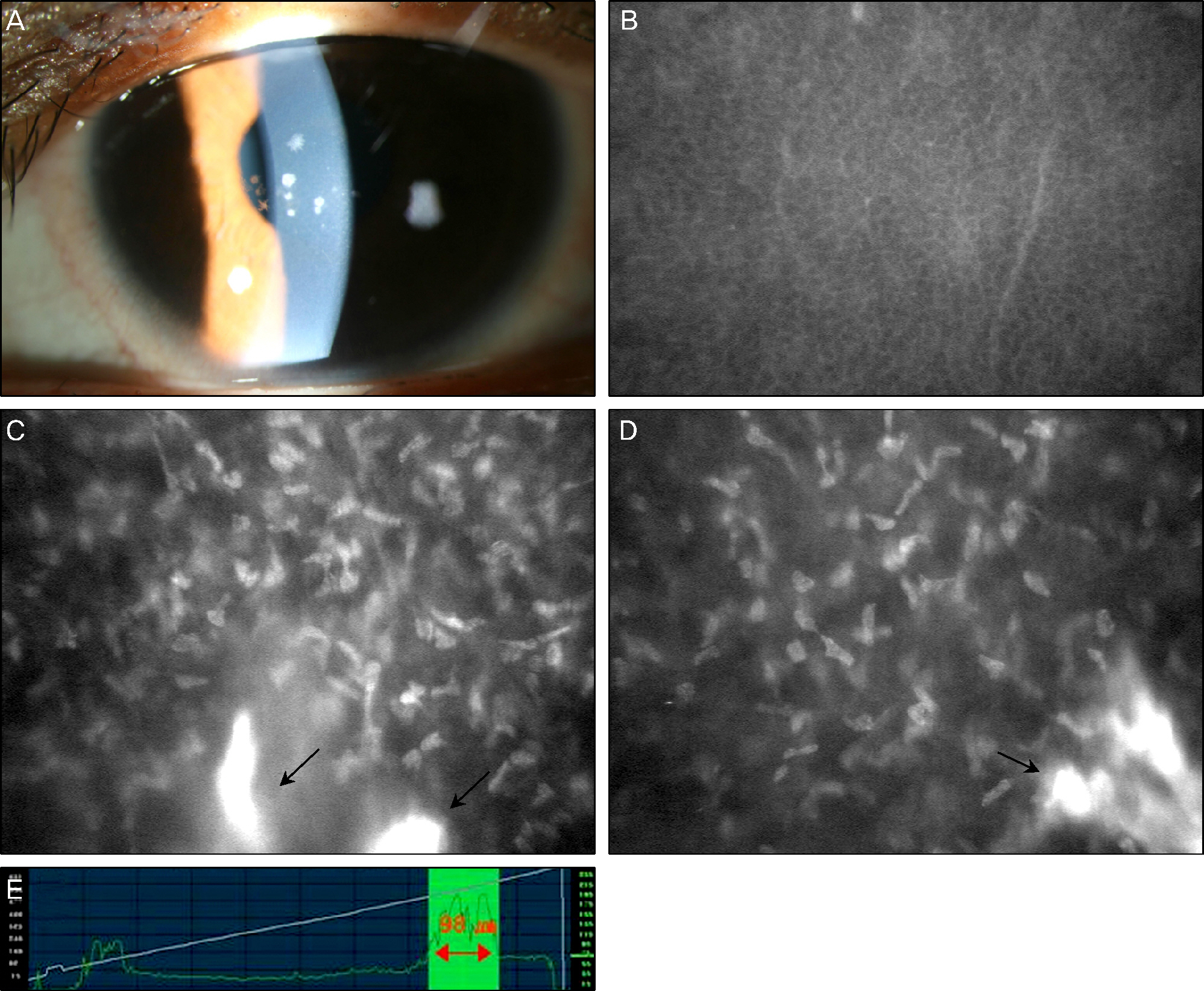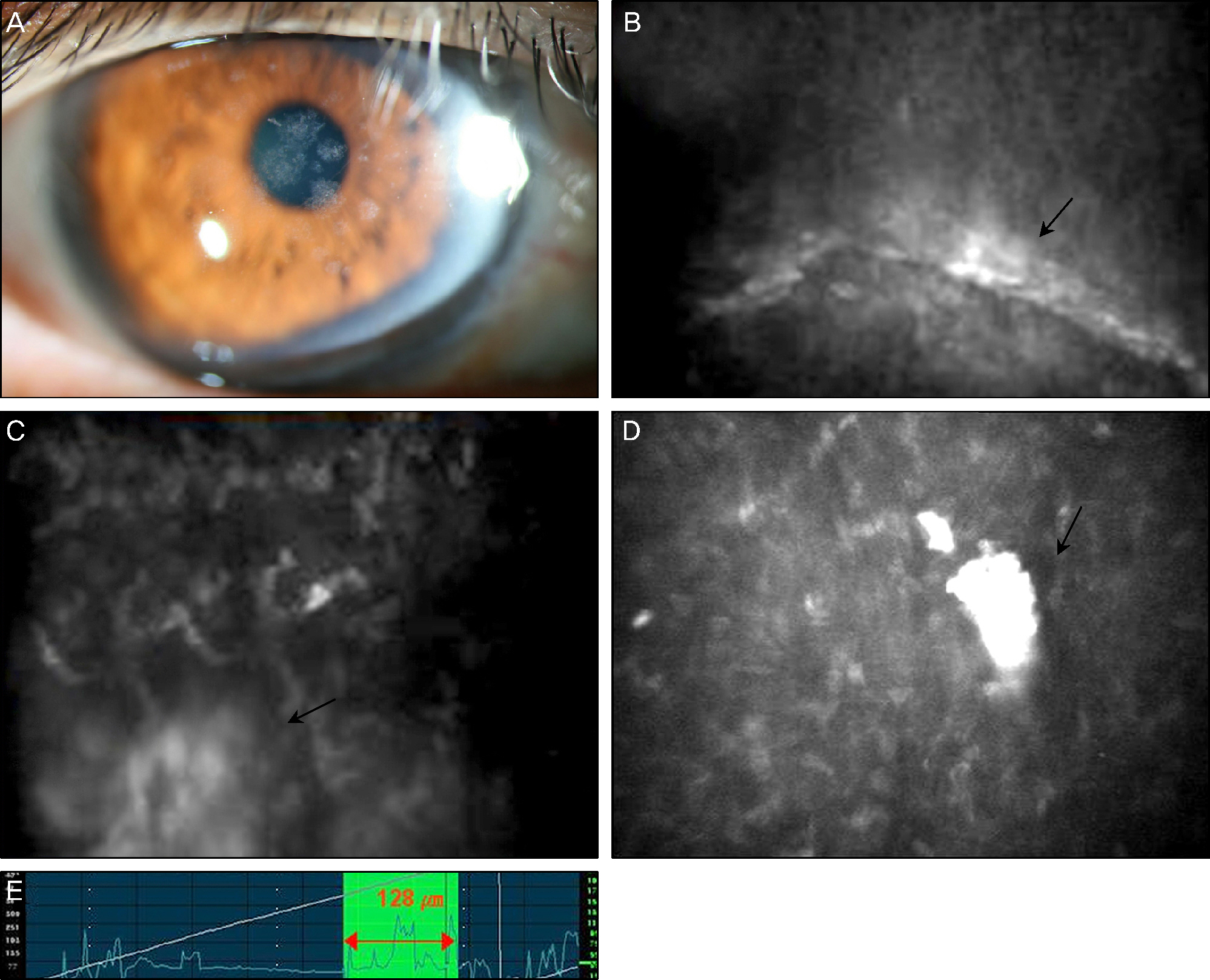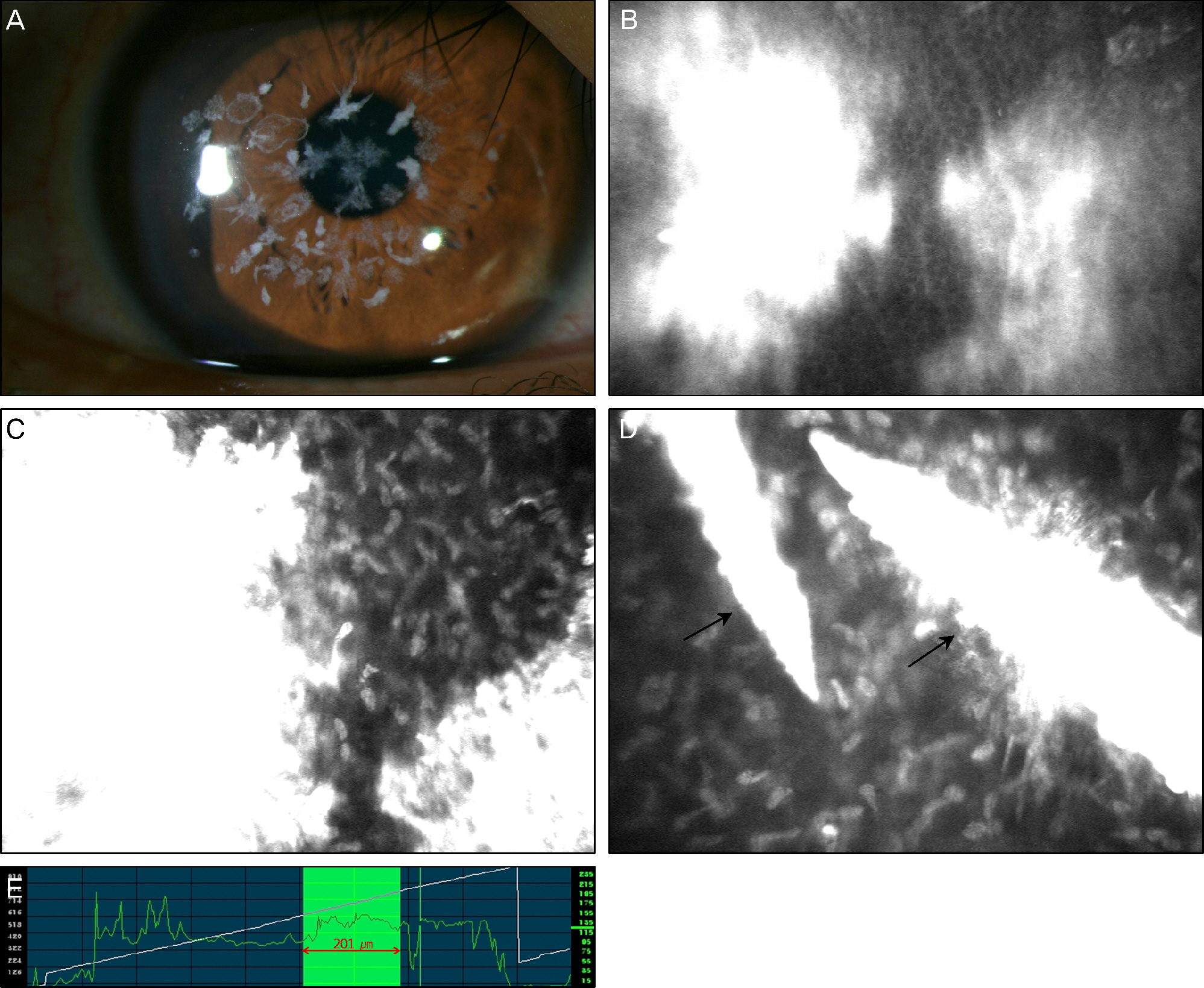J Korean Ophthalmol Soc.
2014 Mar;55(3):361-367. 10.3341/jkos.2014.55.3.361.
Confocal Microscopic Findings of Avellino Corneal Dystrophy According to Disease Severity
- Affiliations
-
- 1Department of Ophthalmology, Pusan National University Hospital, Pusan National University & Medical Research Institute, School of Medicine, Busan, Korea. jongsool@pusan.ac.kr
- KMID: 2218263
- DOI: http://doi.org/10.3341/jkos.2014.55.3.361
Abstract
- PURPOSE
In this study we analyzed and objectified the characteristics of the Avellino corneal dystrophy patients considering disease severity using in vivo confocal microscopy (IVCM).
METHODS
Each corneal layer of 36 eyes in 18 patients with Avellino corneal dystrophy was examined using IVCM (ConfoScan 4.0, NIDEK, Co. Ltd., Albignasego, Italy). Patients were classified into 3 groups based on disease severity (mild, moderate, or severe).
RESULTS
In the mild group, hyper-reflective granular deposits without dark shadows were observed in the anterior stroma. As the disease progressed, corneal deposits were also found at the posterior stroma and epithelium, and clusters of hyper-reflective corneal deposits resembling stromal opacity were noted. The range of corneal deposits measured using Z-scan optical pachymeter was 111.14 +/- 30.95 um in the mild group, 157.47 +/- 25.00 um in the moderate group, and 193.42 +/- 52.23 um in the severe group (p < 0.05).
CONCLUSIONS
The origin of the corneal deposits in Avellino corneal dystrophy may be related to corneal stromal cells and distributed from the corneal epithelial layer to the stromal layer. IVCM might be useful for the standardization of disease severity by digitalizing the range of deposits.
Figure
Reference
-
References
1. Klintworth GK. Advances in the molecular genetics of corneal dystrophies. Am J Ophthalmol. 1999; 128:747–54.
Article2. Kim TI, Pak JH, Chae JB, et al. Mitomycin C inhibits recurrent Avellino dystrophy after phototherapeutic keratectomy. Cornea. 2006; 25:220–3.
Article3. Ferry AP, Benson WH, Weinberg RS. Combined granular-lattice (‘Avellino’) corneal dystrophy. Trans Am Ophthalmol Soc. 1997; 95:61–77.4. Konishi M, Mashima Y, Nakamura Y, et al. Granular-lattice (Avellino) corneal dystrophy in Japanese patients. Cornea. 1997; 16:635–8.
Article5. Akiya S, Takahashi H, Nakano N, et al. Granular-lattice (Avellino) corneal dystrophy. Ophthalmologica. 1999; 213:58–62.
Article6. Yi JH, Ha BJ, Kim SW, et al. The number of cases, cause and treatment of avellino corneal dystrophy exacerbated after LASIK. J Korean Ophthalmol Soc. 2008; 49:1415–24.
Article7. Chung SH, Kim CY, Kim EK. The classification and clinical characteristics in Korean patients with avellino corneal dystrophy. J Korean Ophthalmol Soc. 2005; 46:938–44.8. Akiya S, Takahashi H, Nakano N, et al. Granular-lattice (Avellino) corneal dystrophy. Ophthalmologica. 1999; 213:58–62.
Article9. Korvatska E, Munier FL, Chaubert P, et al. On the role of kera-to-epithelin in the pathogenesis of 5q31-linked corneal dystrophies. Invest Ophthalmol Vis Sci. 1999; 40:2213–9.10. Kanai A, Yamaguchi T, Nakajima A. [The histochemical and analytical electron microscopy studies of the corneal granular dystrophy (author's transl)]. Nihon Ganka Gakkai Zasshi. 1977; 81:145–54.11. Munier FL, Korvatska E, Djemaï A, et al. Kerato-epithelin mutations in four 5q31-linked corneal dystrophies. Nat Genet. 1997; 15:247–51.
Article
- Full Text Links
- Actions
-
Cited
- CITED
-
- Close
- Share
- Similar articles
-
- Clinical Manifestations of Avellino Corneal Dystrophy Diagnosed by Non-invasive Genetic Test
- Phototherapeutic Keratectomy of Avellino Corneal Dystrophy with 0.02% Mitomycin C
- Confocal Microscopic Findings in Posterior Polymorphous Corneal Dystrophy
- Confocal Microscopic Findings of Corneal Tissue in Fuchs' Corneal Endothelial Dystrophy
- The Classification and Clinical Characteristics in Korean Patients with Avellino Corneal Dystrophy




